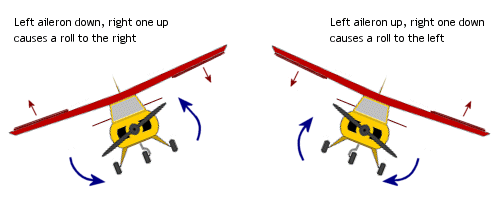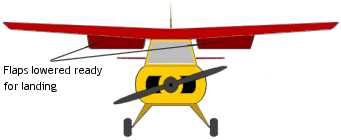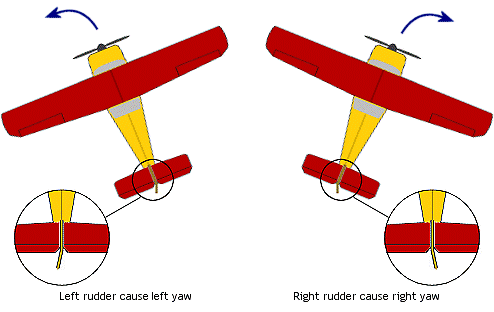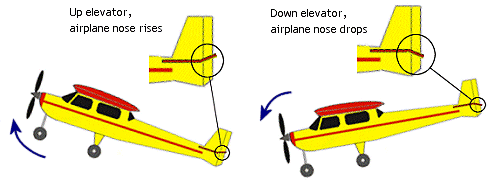But How Do I Make It Move?
In the last Flight School blog we learned about how we use “radio control” in radio control flight, but just what are we “controlling”? In this blog we will dive a bit deeper into the common control surfaces of fixed wing aircraft.
A control surface is a part of an airplanes flying surface (wing or tail), typically hinged, that is moveable1. Movement of the control surfaces cause the airplane to react in a particular manner based on the movement. This movement is known as deflection or throw1. The four common control surfaces are ailerons, flaps, rudder, and elevator.
They main movements of an airplane are Roll, Yaw, and Pitch.
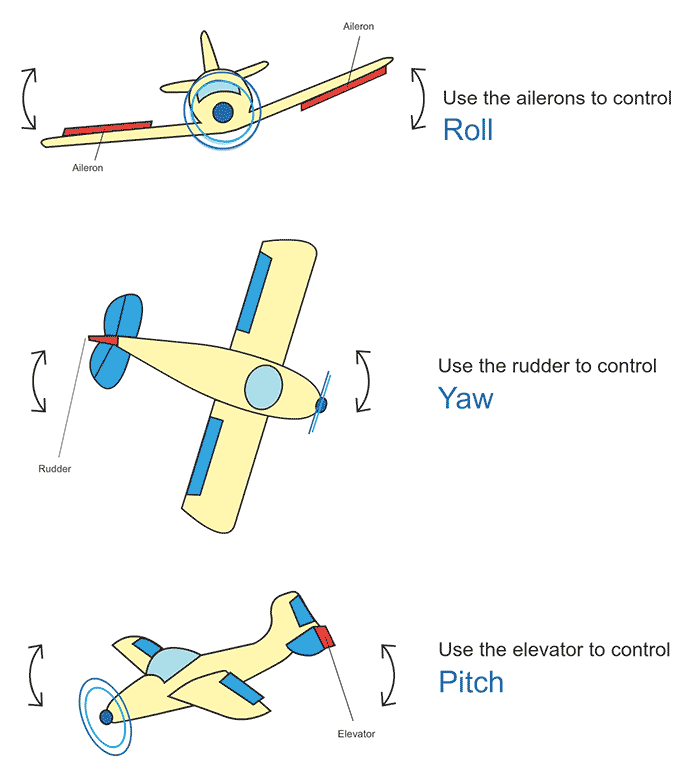
4Photo Credit: https://howthingsfly.si.edu/media/roll-pitch-yaw
Ailerons
Ailerons are located on the outermost part of the trailing edge on your wings. The ailerons control the roll of your airplane and work opposite of each other. When one aileron goes up, the other goes down, resulting in the airplane the wing loosing lift on one side (the aileron that went up) and gaining lift on the other (the aileron that went down). Not all airplanes have ailerons. Those that do not, will rely more on rudder and the angle of the wing (dihedral) to roll1.
1Photo Credit: https://www.rc-airplane-world.com/rc-airplane-controls.html
Flaps
Ailerons are found on the outermost part of the wing, but some airplanes have an additional control surface between the fuselage and the aileron1 called flaps. Flaps are meant to help an airplane get more lift or reduce speed, depending at what time they are engaged and to what extent. Like ailerons, flaps can be found on the trailing edge of the wing, but unlike ailerons they move together. Moving together allows them to function without altering the planes “roll attitude”1 . Attitude is described as the aircraft’s “orientation relative to the horzion”2 . Roll, pitch, and yaw all effect the airplanes attitude. There are different types of flaps that work in slightly different ways. The types include conventional, split, slotted, and fowler3. Split flaps – where the top of the flap doesn’t move but the bottom swings down – are popular with warbird aircraft. You can read more about the different types of flaps here.
1Photo Credit: https://www.rc-airplane-world.com/rc-airplane-controls.html
Rudder
Rudder is the hinged surface on the vertical stabilizer1 . The vertical stabilizer is the part of the tail that “keeps the airplane lined up with its direction of motion”5 . When you move the rudder, you change the yaw of the plane, which “makes the nose of the airplane point to the left or right”1. The use of your rudder is very important control when taxiing, taking off, or landing. When left rudder is engaged, the plane will go to the left – right rudder will direct it the aircraft right.
1Photo Credit: https://www.rc-airplane-world.com/rc-airplane-controls.html
Elevators
The last control surface that I will be covering are the elevators. One of the most important control surfaces, the elevators are responsible for controlling the pitch of the airplane. Pitch is the up or downward movement of the aircraft. The elevators are located on the horizontal stabilizer – the part of the tail that “keeps the airplane aligned with its direction of motion”5. Elevators move the same direction of the nose, so when the elevators are deflected up, the nose goes up and vice versa. Elevators will also effect the airspeed of the plane based on how and when they are engaged1.


